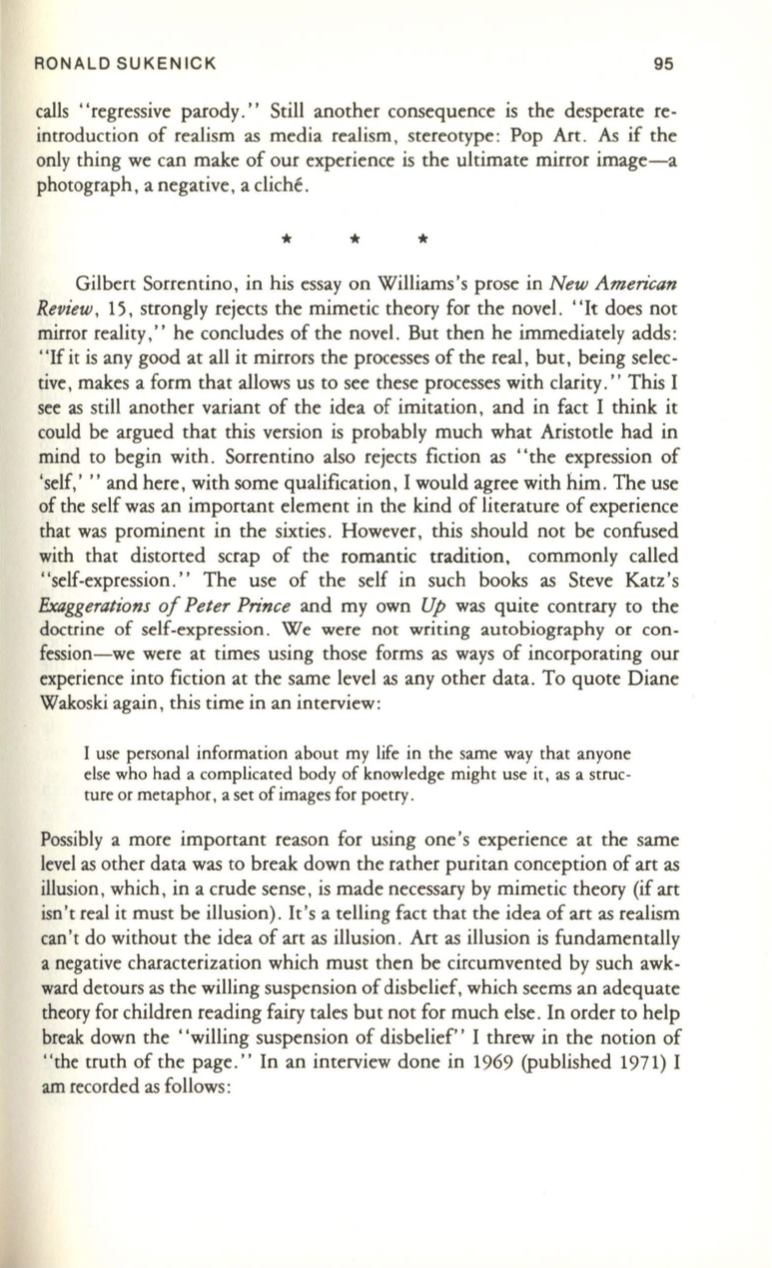
RONALD SUKENICK
95
calls "regressive parody." Still another consequence is the desperate re–
introduction of realism as media realism, stereotype: Pop Art.
As
if
the
only thing we can make of our experience is the ultimate mirror image-a
photograph, a negative, a cliche .
*
*
*
Gilbert Sorrentino, in his essay on Williams's prose in
New Amen'can
Review ,
15, strongly rejects the mimetic theory for the novel. "It does not
mirror reality ," he concludes of the novel. But then he immediately adds:
"If it is any good at all it mirrors the processes of the real, but, being selec–
tive, makes a form that allows us to see these processes with clarity." This I
see as still another variant of the idea of imitation, and in fact I think it
could be argued that this version is probably much what Aristotle had in
mind to begin with . Sorrentino also rejects fiction as "the expression of
'self,' " and here, with some qualification, I would agree with him . The use
of the self was an important element in the kind of literature of experience
that was prominent in the sixties . However, this should not be confused
with that distorted scrap of the romantic tradition, commonly called
"self-expression." The use of the self in such books as Steve Katz's
Exaggerations
0/
Peter Prince
and my own
Up
was quite contrary to the
doctrine of self-expression . We were not writing autobiography or con–
fession-we were at times using those forms as ways of incorporating our
experience into fiction at the same level as any other data. To quote Diane
Wakoski again , this time in an interview:
I use personal information about my life in the same way that anyone
else who had a complicated body of knowledge might use it, as a struc–
ture or metaphor, a set of images for poetry .
Possibly a more important reason for using one's experience at the same
level as other data was to break down the rather puritan conception of art as
illusion, which , in a crude sense, is made necessary by mimetic theory
(if
art
isn't real it must be illusion) . It's a telling fact that the idea of art as realism
can't do without the idea of art as illusion . Art as illusion is fundamentally
a negative characterization which must then be circumvented by such awk–
ward detours as the willing suspension of disbelief, which seems an adequate
theory for children reading fairy tales but not for much else . In order to help
break down the "willing suspension of disbelief" I threw in the notion of
"the truth of the page ." In an interview done in 1969 (published 1971) I
am
recorded as follows :


